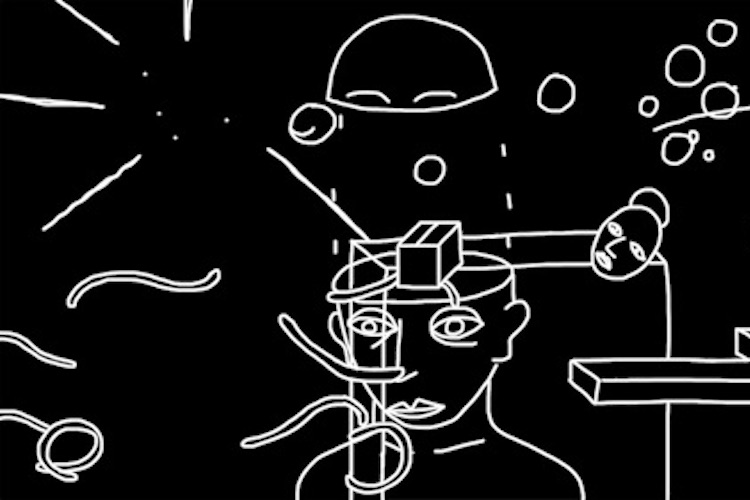Genetics and Education
Neuroscientist Michael Thomas on the heritability of intelligence, the predictive power of the DNA, and a redu...

Mind-wandering can be defined as a situation in which one starts attending to information that is stored or created in one’s brain as opposed to attending to sensory input. For example, when you are driving a car or sitting in the metro, you often get absorbed in thought and miss important information in the traffic even though you are looking and listening. You might even miss your metro stop. The shift in attention may be caused by something in your environment that triggers a whole train of thoughts, but it can also emerge spontaneously without a sensory cue. For neuroscientists, it is interesting to understand why mind-wandering sometimes lasts for five to ten seconds, whereas at other times, it can last several minutes.
What determines the duration of these states? At the psychological level, boredom is a common cause of mind-wandering. For example, if you talk to somebody who keeps on talking, then you may get bored and find it difficult to focus on the monologue as opposed to entertaining yourself with your own thoughts. This is also a challenge for factory workers doing trivial but dangerous jobs as it may lead to accidents. Not to speak of educational settings where students are unable to keep their attention on the teacher or on the book they should study.
Back in the 1890s, the pioneering psychologist William James dwelled on the study of mind-wandering and the stream of consciousness. As James phrased it: “Whilst part of what we perceive comes through our senses from the object before us, another part (and it may be the larger part) always comes out of our own head”.

Only recently, this claim was substantiated by extensive quantitative data in a seminal Science paper by Matthew A. Killingsworth published in 2011. The paper has become a “game changer” in triggering more research into mind-wandering. By recruiting 5000 participants to install an app on their smartphones, Killingsworth was able to study the frequency and content of mind-wandering in naturalistic settings as opposed to previous attempts relying on participants having to fill in a paper or questionnaire at various parts of the day. When the smart-phone app went off at random moments of the day, participants had to respond to three questions: “How are you feeling right now?”, “What are you doing right now?” and “Are you thinking about something other than what you are currently doing?”. This resulted in a quarter of a million responses data revealed a staggering mind-wandering frequency of 47%. So, that was sort of an experimental proof of James’ words.
Whether specific brain systems can give rise to mind-wandering is a contemporary and intriguing question. The brain system most frequently implicated with mind-wandering is the so-called default mode network. It was discovered by Marcus Raichle and his co-workers almost 20 years ago while performing a meta-analysis of PET imaging, which can be used to measure metabolic activity. The researchers discovered that certain brain regions reduced their activity whenever you asked people to perform an active task. This was a surprising discovery because scientists used to think cognitive tasks should lead to an increase in brain activity. Instead, it turned out that there are major brain regions both in the medial anterior and posterior part of the brain with a high baseline activity when you are resting, and activities in these brain regions attenuate, for example, when you perform an arithmetic task.

Still, we know little about the functional role of the default mode network. It is often studied using so-called resting-state neuroimaging in which people are asked to sit still for five to ten minutes with their eyes closed and prevent falling asleep. Unfortunately, we have only since recently had validated tools available to quantify the content and quality of thoughts and feelings during rest, and it is still not implemented as a standard procedure in resting-state neuroimaging to obtain such data. The Amsterdam Resting-State Questionnaire was specifically developed for this purpose and validated against the resting-state experiences of more than 1000 normal people. Research using this questionnaire has shown that there is a large and reliable individual variation in thoughts and feelings in normal people, but also that mental illnesses like depression and anxiety strongly impact thoughts and feelings when we rest. Much work remains before we understand the neural correlates of such resting-state mind-wandering experiences.

The large and stable individual variation in mind-wandering content points to genetic influences, which is an interesting yet untouched topic. While Killingsworth found that “people” minds wander about 47% of their awake day, this is likely to vary, for example, from 35– 65% between individuals. Everybody has a certain need to internally prepare, process and place information, but an extrovert person may spend less time on this than an introverted person.
Today there is an increasing interest in the Western world to use mindfulness or focused attention meditation training to gain focus and feel less stressed. During such training, people try to focus on just one point, for example, the movement of one’s chest or on the air going through one’s nostrils for ten to twenty minutes. However, this is boring, and the untrained person will tend to engage in mind-wandering. At some point in time, the person will notice that he is mind-wandering, and the attention should be brought back to the task focus. Learning to train one’s attention is not done in a few minutes, but if one does it every single day for several weeks or years, it is possible to learn it. Such interventions have been associated with improved mental health in depression, anxiety, and post-traumatic stress disorder, and current efforts seek to understand the neuronal mechanisms underlying these effects, as well as the impact on the content, quality, and frequency of mind-wandering episodes.
Neuroscience is currently experiencing an explosion in data and rapid progress in the digital signal processing used to make sense of the data. Resting-state neuroimaging is just one example of this, as we measure hundreds to thousands of time series, each one of them originating from a small piece of brain tissue and exhibiting extremely complex fluctuations. The challenge to the signal-processing engineer is to quantify these fluctuations and relate them to neuronal mechanisms, cognition and behavior.

In parallel to these developments, we have a fast-growing field of computational neuroscience. In other words, neuronal systems are modeled on a computer, which allows for more controlled experiments on the role of specific mechanisms in brain dynamics. The challenge is to find the right level of measuring and describing human brain function, from molecules to behavior, and to relate experimental data with computational models so that we can ultimately understand such a complex and important phenomenon as mind-wandering. In fact, the amount of knowledge required may very well exceed the capacity of an individual human being. Thus, with the advent of evermore sophisticated artificial intelligence (AI) capable of working with unstructured data, one cannot exclude that artificial intelligence will play an important role in making sense of data and knowledge about the brain.
Every single year there, new records are broken in what machines can do better than humans. Twenty-five years ago, it was beating a chess champion. But chess is a pretty structured game, and then it went on to beat the best Jeopardy players, and last year a computer beat the champion in Go. IBM Watson has come up with better cancer diagnoses than the best medical doctors in the world can do. With artificial intelligence rapidly improving the ability of computing systems to make sense of data, it is difficult to see why these developments will not outperform the human capacity to absorb a lot of information and make better decisions for how to understand the brain and make better suggestions for how to treat its disorders.

Neuroscientist Michael Thomas on the heritability of intelligence, the predictive power of the DNA, and a redu...

Neuroscientist Karl Friston on functional specialization of different brain areas, brain hierarchy, and the co...

Computer scientist Thomas Schmickl on bio-inspired robotics, virtual embryogenesis, and symbiotic multi-robot ...